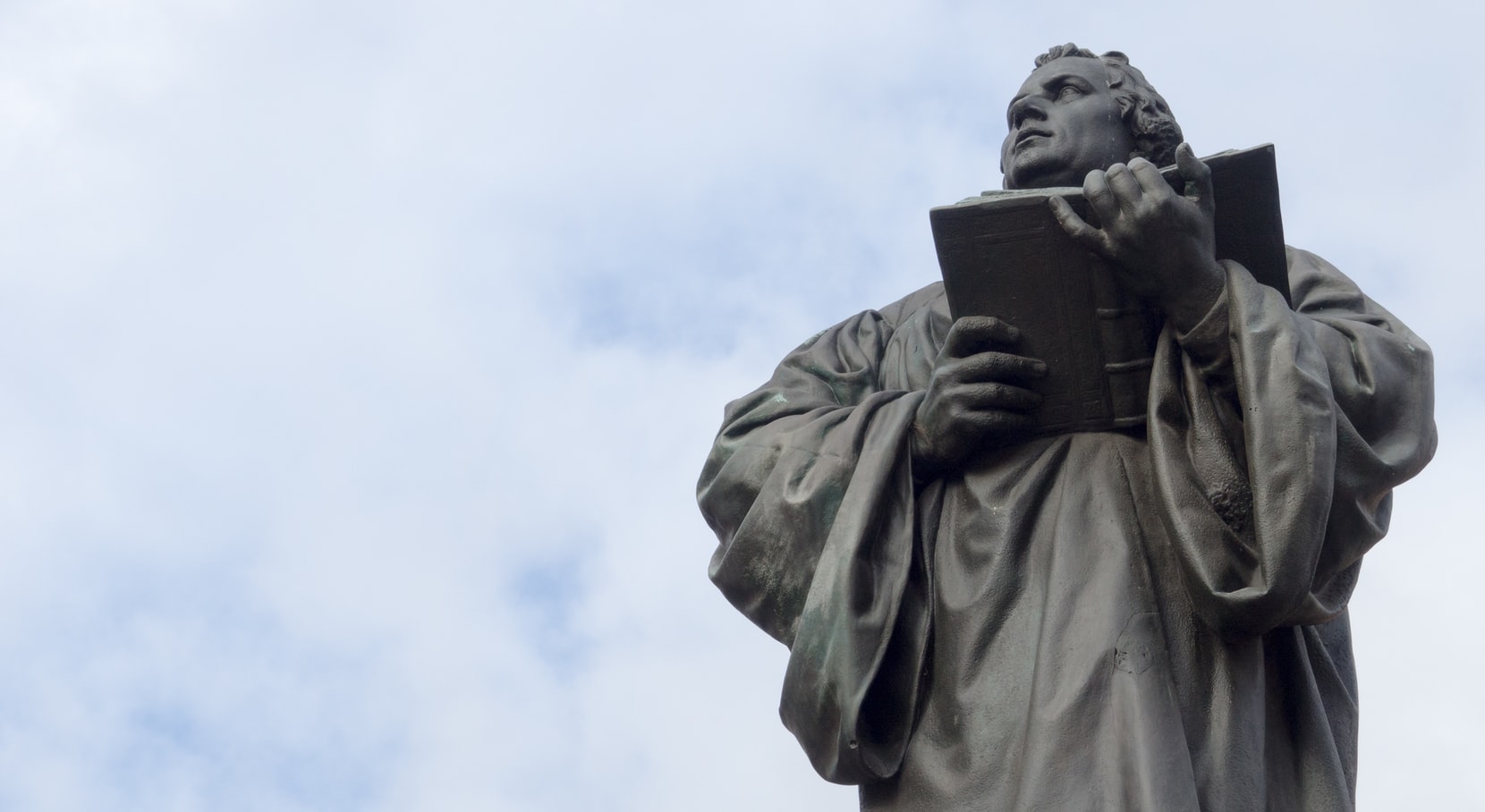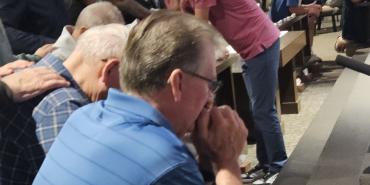Where Luther Stood, Stand We

He had made that walk countless times, yet as he passed through the streets of Wittenberg, his pace was slower than usual. He seemed to be lost in thought, as if he were debating some great issue in his own mind.
It was October 31, 1517, and as Martin Luther reached the doors of the church, he stopped. Pausing just a moment, as if the debate had ended, he reached into his satchel and removed a large parchment. He looked it over one last time and then nailed it to the door. The parchment contained a neatly penned list of 95 theses, sentence arguments, regarding the current practices of the Church.
Martin Luther had no idea that the spark of his protest would ignite a bonfire that would forever change the character of the Christian Church. His actions on that October day united a host of protesters (Protestants). A great movement to reform the Church was inaugurated, and the ripples of the Reformation continue to this day.
The Reformers protested the substitution of the Church for God. It was taught during Luther’s day that salvation rested within the Church alone. The Church, through the clergy, mediated salvation.
Men had also substituted good works for repentance. The Church of that day taught that a person’s salvation came as a result of the activity of God and man. God reached out in love—but one had to respond with good works.
As a young man, Martin Luther believed this, and he gave himself to trying to accumulate good deeds and acts of devotion. But he found no peace.
Then, in July of 1517, Luther was working on a lecture based on Galatians 3. And from his study these words leaped forth to bring new light and freedom to his spirit:
Did you receive the Spirit by observing the law, or by believing what you heard? . . . All who rely on observing the law are under a curse, . . .Clearly no one is justified before God by the law because, “The righteous will live by faith" (Galatians 3:2b, 10, 11).
Luther began to see that salvation was neither earned nor bought, but bestowed by grace and accepted by faith.
The picture of salvation prevalent in Luther’s day was that of a man trapped at the bottom of a great cavern or well. God through Christ came to save, but He only came part way. It was necessary for man, by good works, to raise himself sufficiently so that God might save him.
But the reformation message was this: Man is at the bottom of a well so deep that he can do nothing whatsoever to get out. But God reaches down into that well, not just part way, but all the way. And He takes hold of man by grace and man takes hold of God by faith and is lifted out of that pit of sin and set upon the rock of salvation.
The Church during Luther’s time had also elevated the role of the ministry to the point where the word of man had been substituted for the Word of God. Authority rested with the Church, through the priests, not the Word. In fact, very few could read the Bible. Luther and the other Reformers underscored the supremacy of the Scriptures and the priesthood of all believers and the necessity of people being able to read the Bible for themselves.
In response to Luther's affirmations, the officials of the day arrested him and brought him to an inquiry. As he stood before the religious leaders of that time, he was instructed. “You must recant; you must deny that which you have affirmed.”
Luther gave his now famous reply: “My conscience is captive to the Word of God. I will not recant. Here I stand: God help me. Amen.”
We continue to need that kind of conviction today, for we face many of the same issues Luther faced: the substitution of religion for relationship, the constant temptation to try to earn our salvation, and the elevation of man’s wisdom over God ’s word (the rise of humanism, for example).
Though we are not Lutherans, we are among those who affirm the stands he took. So with great confidence in God ’s Word written and with an unshakable faith in God ’s love and grace, we declare that where Luther stood, stand we. And may God’s grace give us the same strength of conviction.
John C. Bowling
Herald of Holiness, October 1993
Please note: This article was originally published in 1993. All facts, figures, and titles were accurate to the best of our knowledge at that time but may have since changed.




